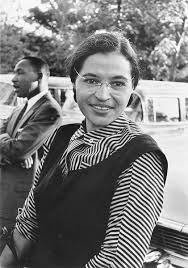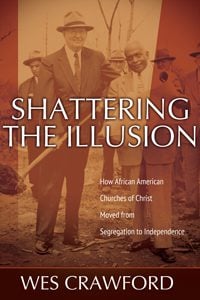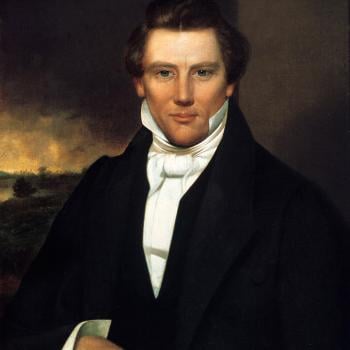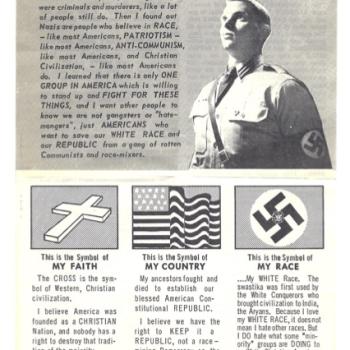
When authorities in Montgomery, Alabama arrested Rosa Parks for refusing to give up her seat to a white patron on December 1, 1955, African Americans in the city formed the Montgomery Improvement Association (MIA) in order to organize a direct action campaign. Led by twenty-six year-old Martin Luther King, Jr., the MIA launched a boycott of the city’s public bus system. Since a majority of bus patrons were African American, the boycott financially stressed the public transportation department. Over a year later, the buses were successfully desegregated, a major win for civil rights advocates. In most retellings of these events, it was the perseverance of the boycotters that ultimately triumphed over segregation on Montgomery’s buses. Without a doubt, their indefatigable courage played a huge role in the success of the year-long effort, but without the legal action taken up against the segregation laws of the state of Alabama in Browder v. Gayle, the boycott would have been broken. African American Church of Christ elder Fred Gray and two other attorneys (E.D. Nixon and Clifford Durr) represented the plaintiffs in that crucial lawsuit; their victory in 1956 spelled the end of segregated buses in Alabama.
Although not as well-known as E.D. Nixon or Thurgood Marshall, Gray would become an “acclaimed civil rights attorney” who later “became the first African American elected as president of the Alabama State State Bar Association (Crawford, 101).” So writes Wes Crawford, minister of Glenwood Church of Christ in Tyler, Texas and adjunct faculty member at both Lubbock Christian University and Abilene Christian University. In Shattering the Illusion: How African American Churches of Christ Moved from Segregation to Independence (2013), Crawford recounts how African American leaders in black churches of Christ extricated themselves from racism, segregation and paternalism to establish their own independent movement by the end of the twentieth-century.
 In the telling, Crawford provides a helpful primer on several critical aspects of American religious history including race and the history of the Stone-Campbell movement. In the introduction, he succinctly summarizes recent discussions revolving around the category of race, while dedicating the first chapter to assist readers in “understanding Churches of Christ,” the most decentralized denomination on the American landscape. Some within the movement even make a persuasive argument as to why churches (little c) of Christ–with no official organizational structure–should not be considered a “denomination” at all. In spite of the lack of formal connections, historians of American Christianity sense that these separate congregations remain organically connected in some way, shape, or form–even if they cannot put their finger on the specifics of that connection. In Shattering the Illusion, Crawford has done so, credibly arguing that, in the absence of any formalized denominational ties, the movement’s colleges, papers, and annual “lectureships” function authoritatively in directing the movement and mediating its theology. This recognition is not ancillary to the story of how African American Churches of Christ “moved from segregation to independence,” but forms the interpretive lenses through which the contours of the story must be read–something Crawford does well.
In the telling, Crawford provides a helpful primer on several critical aspects of American religious history including race and the history of the Stone-Campbell movement. In the introduction, he succinctly summarizes recent discussions revolving around the category of race, while dedicating the first chapter to assist readers in “understanding Churches of Christ,” the most decentralized denomination on the American landscape. Some within the movement even make a persuasive argument as to why churches (little c) of Christ–with no official organizational structure–should not be considered a “denomination” at all. In spite of the lack of formal connections, historians of American Christianity sense that these separate congregations remain organically connected in some way, shape, or form–even if they cannot put their finger on the specifics of that connection. In Shattering the Illusion, Crawford has done so, credibly arguing that, in the absence of any formalized denominational ties, the movement’s colleges, papers, and annual “lectureships” function authoritatively in directing the movement and mediating its theology. This recognition is not ancillary to the story of how African American Churches of Christ “moved from segregation to independence,” but forms the interpretive lenses through which the contours of the story must be read–something Crawford does well.

In 1967, at the height of the Civil Rights movement, black Church of Christ leaders, led by Fred Gray, filed a lawsuit to prevent the white board of directors of the Nashville Christian Institution from closing the all-black school, selling its assets, and using the proceeds to establish a scholarship fund for African American students at the-just-recently-desegregated David Lipscomb College. White Church of Christ members were shocked by this action. For most of the twentieth-century, despite the movement’s white paternalism (at best) and support for segregation (at worst), the illusion of friendly race relations had been perpetuated in the colleges, papers, and annual “lectureships” controlled by the white leaders. Most often, they simply ignored Jim Crow, communicating to their constituents that the issue was irrelevant to ministry in Churches of Christ. Other times, they presented an illusory picture of racial harmony by highlighting the work and ministry of popular accomodationist African American leaders such as Marshall Keeble, the President of the Nashville Christian Institute.
Although whites were shocked, the 1967 lawsuit highlights the manner in which African American members of this most undenominational denomination strove towards greater equality throughout the twentieth century–just as their fellow African Americans across the country did. For them, this meant independence rather than continued dependence upon white largesse with its accompanying paternalistic control. In reality, African American Churches of Christ had been moving away their white coreligionist for quite some time, establishing separate, black-controlled sources of authority: Southwestern Christian College, the Christian Echo, and their own “lectureships.” Like their peers in Baptist, Presbyterian, and Methodist circles, African Americans within the Churches of Christ were well aware of just how “separate” they were from their white colleagues. Unlike their peers in those denominations, the lack of institutionalized denominational structures had allowed the illusion of racial harmony to linger longer. After 1967, that would no longer be the case as latent racial divisions were revealed and the groups began to move further apart. Once again, even within the Stone-Campbell movement, a movement founded upon the strongest of commitments to Christian unity, it was race and not shared religious convictions that determined solidarity.















